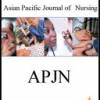Abstract
Title
AN EXPERIMENTAL STUDY TO ASSESS THE EFFECTIVENESS OF THERMOMECHANICAL STIMULATION DURING VENIPUNCTURE ON PAIN & ANXIETY AMONG THE PAEDIATRIC POPULATION 8-14 YEARS OF AGE IN SELECTED GOVT HOSPITAL RAIPUR.
Author
Jayanthi. J, Shylu Saji, Savita Verma
Email
jenio1983@gmail.com
keyword
Effectiveness Thermo Mechanical Stimulation, Pain, Anxiety, Venipuncture, Pediatric Population
Abstract
Pain is a distressing feeling often caused by intense or damaging stimuli..Procedures that require a needle stick are among the most common procedures for paediatric patients in the health care setting and are a source of pain. Venipuncture which is a needle-procedure, including vascular access and setting up of intravenous cannulation, was reported to be one of the most common source of pain (Linhares et al., 2012), The pain that accompanies these procedures may induce anxiety in both paediatric age groups. Though impressive pain reduction was observed when cold and vibration were combined (thermomechanical stimulation), the two have not been used in conjunction in a clinical setting until recently.Aims: To evaluate the effectiveness of thermo mechanical stimulation (cold & buzzy device) during venipuncture on pain & anxiety among paediatric population 8-14 years of age. Materials and methods: A true experimental research design post test only design is utilized to achieve the stated objectives.the conceptual framework of the study was based on roys adaptation with gate control theory of pain .A systemic random sampling was used to select the samples(n=60)(experimental group=30:control group=30) in which theage group is 8-14 yrs .the tools were used in this study is socio demographic variables, wongs baker pain scale and child fear scale used to assess the pain and anxiety during veinpunture. Results: Data analysis was done by using descriptive statistics (Mean, Median ,standard deviation, Mean percentage , t test ,coefficient of variance) and Inferential statistics ( Chi- square test). Result of data was analysed by an unpaired “t” test which reveals that the post , test pain score (X= 1.13, SD=0.68) in experimental group and in control group (X=4.07, SD=0.74, df=58 ) and obtained “t” value is 16.02 { Highly significant} and table value is 2.00 whereas, post test anxiety score was (X=4.07, SD=0.74,df=58) in experimental group and in control group (X=3.37 ,SD=0.49) and obtained “t” value is 15.12 {highly significant} and table value is 2.00 at the level of 0.05 level of significance .The calculated value is more then tabulated value so research hypothesis is accepted and null hypothesis is rejected. Conclusion: The findings reveals that there is significant reducing pain and anxiety during veinpuncture after administering thermomechanical stimulation via buzzy













